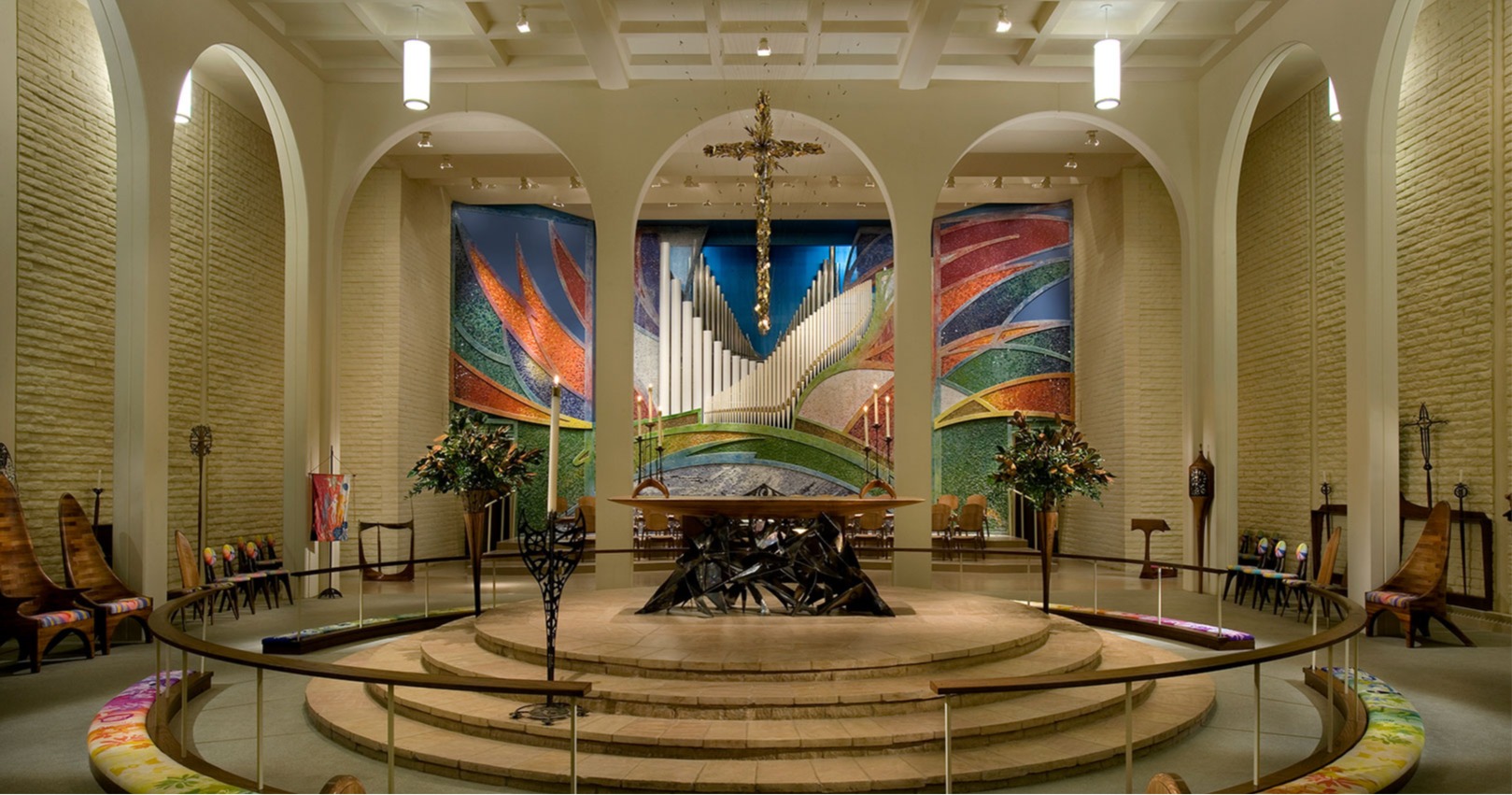

Scottsdale, AZ

The new organ Casavant installed in 2011 at The Episcopal Parish of Saint Barnabas on the Desert represents an unusual collaboration between a pipe organ builder and a visual artist to create a significant artwork. In our very first meeting, the committee overviewing all aspects related to fine arts at the church clearly expressed the need that the front of the church be an expression of who they are, with church symbolism and with bright colors as found in desert areas.
In this project, we had the pleasure of working collaboratively with world-renowned glass artist Sarah Hall to create a highly symbolic organ façade in this strikingly beautiful 1961 church building. From the sketch Sarah made, Casavant’s designer Benoit Gendron prepared a design, and then a series of detailed drawings and renditions to show how the imposing glass mosaic could become part of the organ façade while making sure the sound of the organ will get through. These studies proved to be invaluable to Sarah in her creative process. Based on the layout of the organ, we determined which sections of the façade had to be covered with painted, acoustically transparent mesh. Interestingly, pipes of the Great Double Open Diapason 16’ and Open Diapason 8’ were painted white and laid out in such a way to illustrate the dove ascending, symbolizing the Holy Spirit.
The outstanding collaboration between the Casavant crew and Sarah’s team was key to the success of this installation. As the pipe organ, the layers of glass mosaic and the acoustically transparent sections are imbricated, their concurrent installation required the greatest attention possible.
Tonally, the organ is a complete three-manual instrument of 40 independent stops, with 52 ranks of pipes designed to support the Anglican liturgy, and featuring plentiful resources in the bass and the mid-range, two large expressive divisions, full principal choruses on all manual divisions, flutes of contrasting character and volume, and chorus and color reed stops.
Interestingly, the lower section of the artwork below the pipes and the angled side panels are sound reflective. The organ, with its disciplined and symmetrical layout, along with the choir are centered in the space and speaking along the main axis of the room. Also, the ceiling in the choir loft area was rebuilt with three angles. All these beneficial modifications ensured an optimal sound projection and a much improved sonic presence into the room.
From Sarah Hall:
I would like to share some thoughts about the artistic creation of the new glass mosaic and organ project, titled “Wondrous Love”.
When I started this work I was inspired by the sense of color and movement that gave such a strong spiritual message in the original tapestry, “Ode to Joy.” In transforming this to the beautiful new pipe organ, I drew together visual elements from the music building window and the colors and forms in the landscape.
Within the Bible there is a desert story – a sound emerges from the wilderness – God’s voice speaking to the people. Through this instrument, built by human hands, we respond to the Spirit with songs of praise. The artwork that surrounds the instrument becomes a visual expression of our song. The resulting work resembles a desert flower, with layer after layer opening and unfolding in mystery and beauty, rising to become like a dove – a symbol of the Holy Spirit. These forms hover above the water of our baptism- a gift of the spirit.
The organ was collaboratively designed with Casavant organ builders, in Quebec - Opus 3881 is a three manual organ with forty stops and 2929 pipes. Surrounding the organ pipes are mosaic panels containing over 80,000 hand painted and cut glass mosaic tiles. The artwork was fabricated at Glasmalerei Peters Studio in Paderborn, Germany where many of my projects are created.
The title of the work, “Wondrous Love,” is inspired by the great American spiritual, which begins: “What wondrous love is this oh my soul, oh my soul?” - The heartfelt expression that inspired the tapestry and its title: Ode to Joy. Celebrate!